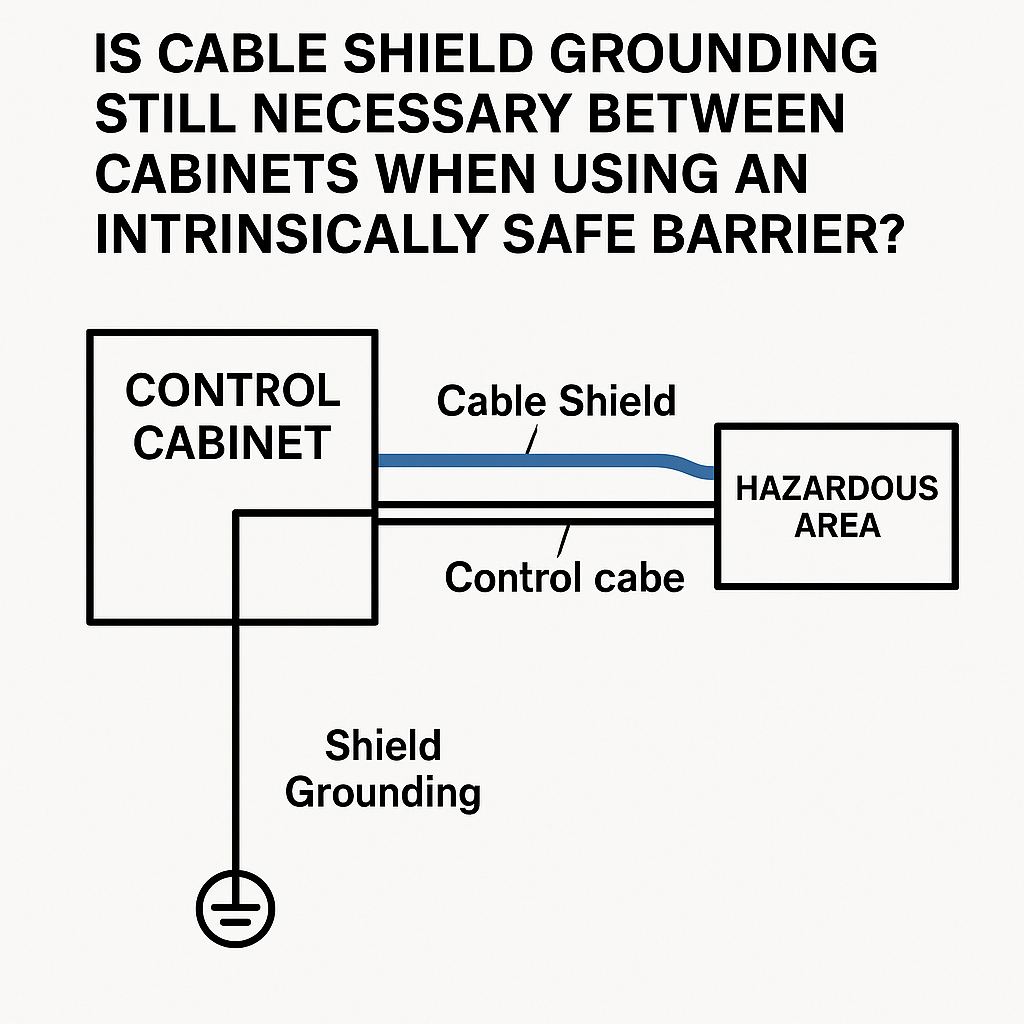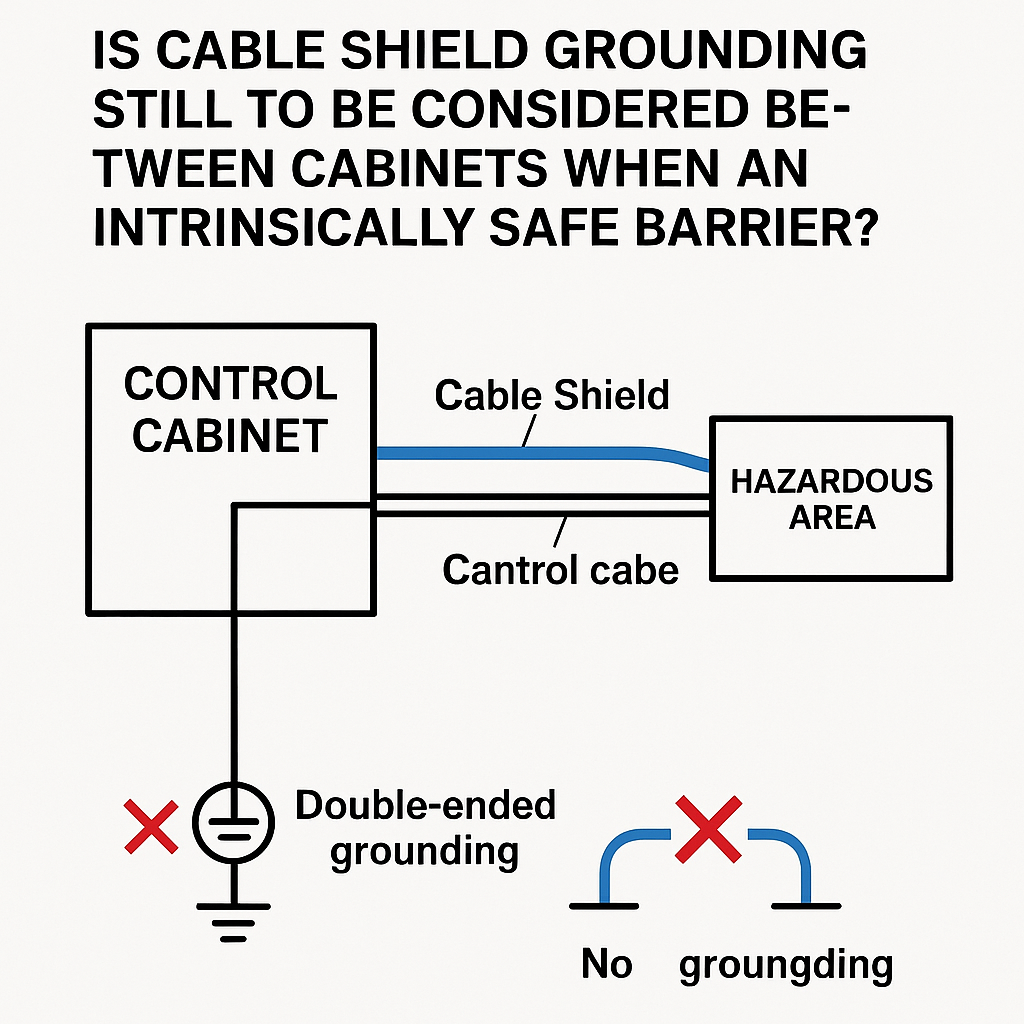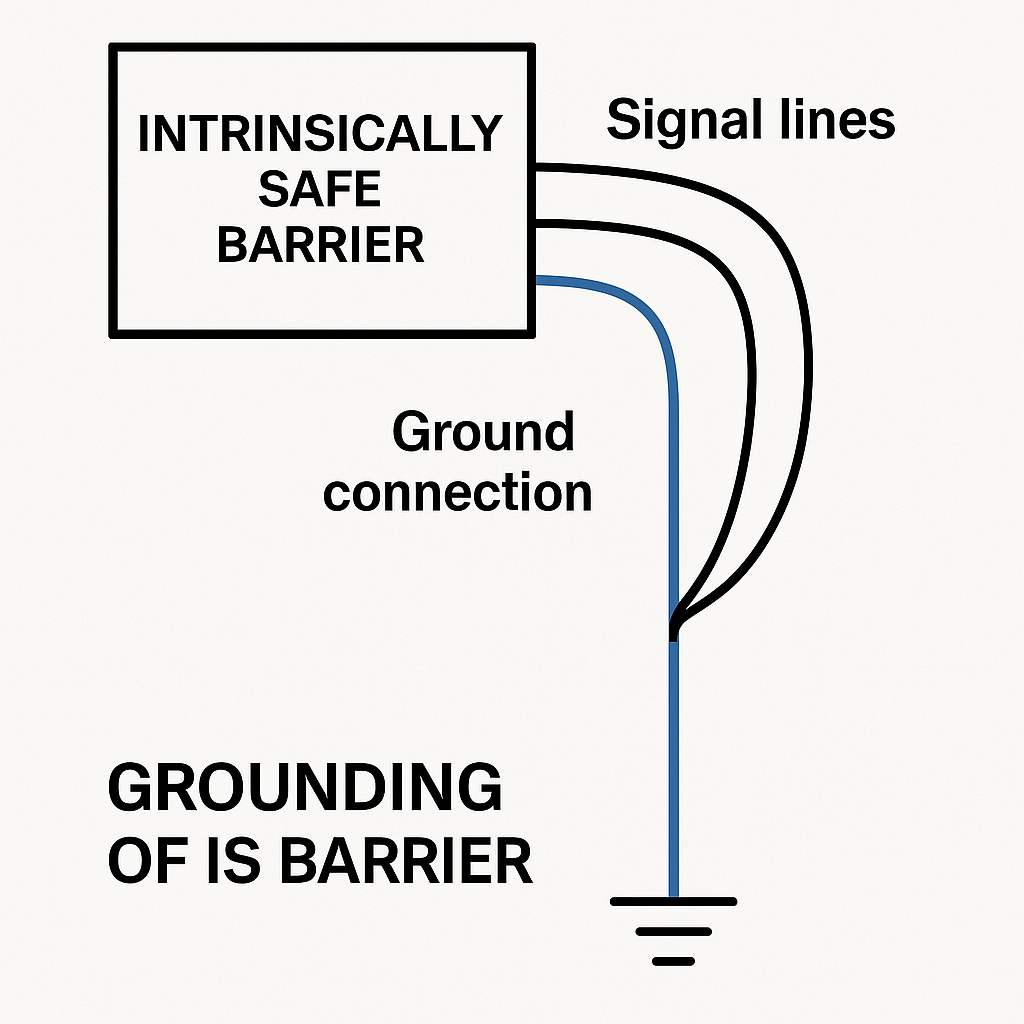✅ Executive Summary
The presence of intrinsic safety barriers (IS barriers) in a system does not eliminate the need for proper cable shield grounding between control cabinets. Shield grounding and IS barrier functions serve different engineering purposes and must both be correctly implemented to ensure signal integrity and system safety.
⚙️ 1. Misconception: “Shield Grounding is Optional with IS Barriers”
Some engineers mistakenly believe that:
Since IS barriers provide galvanic isolation and surge suppression, external interference is “already blocked”;
Cable shields are primarily for EMI shielding, so IS barriers make grounding redundant;
Grounding can be done casually or even left unconnected without consequence.
⚠️ These assumptions are incorrect and risk signal errors, ground loops, or safety hazards.

🔧 2. Purpose of Cable Shield Grounding
Cable shielding is not merely decorative — its primary roles include:
Electromagnetic Interference (EMI) Protection: The shield blocks external noise and redirects it to ground instead of letting it affect signal conductors;
Electrostatic Discharge (ESD) Drainage: High-voltage spikes can accumulate on ungrounded shields;
Preventing Crosstalk and Instability in analog and digital signal lines.
If the shield is:
Left floating (ungrounded), it cannot block or drain EMI;
Grounded at both ends, it may cause ground loops and pickup additional noise.
🧲 3. What IS Barriers Actually Do
IS (Intrinsically Safe) barriers are designed for hazardous area protection, typically via:
Voltage/Current Limiting: Using Zener diodes or current-limiting resistors to prevent sparks;
Galvanic Isolation: Breaking direct electrical connection between safe and hazardous zones;
Surge Protection: Mitigating high-energy transients.
🔍 However, IS barriers are not designed to manage EMI, nor can they replace proper shield grounding practices.

📐 4. Standards and Codes of Practice
National and international standards emphasize correct grounding of shields:
| Standard | Key Requirement |
|---|---|
| GB 50258-2014 (China) | Shields must be grounded at the control room cabinet side; remote end left floating or capacitively grounded. |
| IEC 60079-14 | IS barriers must be grounded; shield grounding must not interfere with intrinsic safety paths. |
| IEEE Std 518 | Ground shields at one point only to prevent ground loops. |
| API RP 551 | Field cables should have shields grounded in the control system room only. |

🛠️ 5. Engineering Recommendations
| Component | Recommended Practice |
|---|---|
| Cable Shield | Single-point grounding at the control cabinet (typically DCS or PLC end) |
| Field End | Leave shield floating or connect via capacitor (for high-frequency EMI shielding) |
| IS Barrier | Must be reliably grounded per manufacturer and explosion-proof design specs |
| Cross-Cabinet Wiring | Maintain shield continuity, but ensure grounding at only one designated point |
| Grounding Hardware | Use shield clamps, termination brackets, or EMC-grade glands to ensure low-impedance connections |
